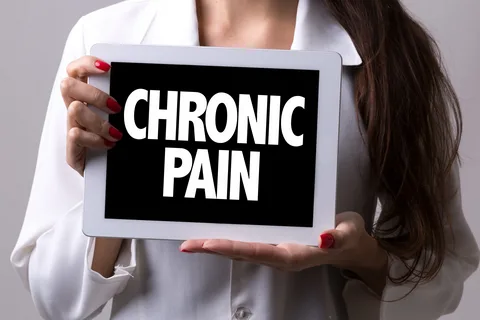Chronic pain affects millions of people worldwide. It has the capacity to last for weeks, months, or even years. This kind of pain doesn’t just hurt the body. It also impacts sleep, mood, and quality of life. Many people with long-term pain often feel trapped in a never-ending cycle.
But today, science and technology offer new hope. There are now several innovative ways to manage pain that go beyond traditional medications. These options aim to give lasting relief with fewer side effects.
Understanding Chronic Pain
When pain endures beyond three months, it is classified as chronic. It may start after an injury or illness but can continue even after the body has healed. Conditions like arthritis, fibromyalgia, nerve damage, or back issues are common causes.
Living with chronic pain is frustrating. The discomfort can lead to anxiety, depression, and fatigue. Over time, the brain and nervous system become more sensitive, making even mild pain feel intense.
Exploring New Solutions
For years, people depended mainly on painkillers to manage chronic pain. While these can offer short-term relief, they may not treat the root cause. In many cases, long-term use of pain medications can lead to side effects or dependency.
That’s why many are turning to newer procedures like LED Light Therapy. This technique uses specific wavelengths of light to reduce inflammation and improve blood flow. It supports the body’s healing from the inside out. People use it for joint pain, muscle soreness, and nerve-related pain. It’s painless, drug-free, and safe for long-term use. What makes it unique is that it supports the body’s natural healing process without harsh chemicals.
Movement-Based Therapies
Gentle movement helps reduce pain and stiffness. While it may sound strange to move when in pain, doing so can actually help in the long run. Activities like stretching, walking, yoga, or tai chi can increase flexibility and reduce stress. These exercises improve blood circulation, which supports healing.
Physical therapy is also highly effective. A trained therapist can guide you through targeted movements to strengthen weak muscles and reduce pressure on painful areas.
Mind-Body Techniques
The mind and body are deeply connected. Pain can feel worse when you’re stressed, anxious, or sad. That’s why mind-body techniques are so powerful in managing chronic pain.
Here are a few helpful practices:
- Meditation and deep breathing: These help calm the nervous system.
- Guided imagery: Thinking of peaceful scenes can reduce pain signals.
- Biofeedback: This uses sensors to teach you how to control heart rate and muscle tension.
These methods help retrain the brain to respond differently to pain.
Acupuncture and Dry Needling
Acupuncture is an ancient Chinese technique that uses thin needles on specific points of the body. It’s believed to balance energy flow and reduce pain. Many people with chronic pain find relief through regular acupuncture sessions.
Dry needling is a more modern technique. It targets muscle knots that cause pain and tension. While the two methods use similar tools, they follow different principles.
Diet and Inflammation
What you eat can also affect how much pain you feel. Certain foods can increase inflammation in the body, which can worsen chronic pain. Sugar, fried foods, and processed snacks are common culprits.
Instead, try to eat anti-inflammatory foods like:
- Leafy green vegetables
- Berries
- Turmeric
- Fatty fish like salmon
- Nuts and seeds
Drinking enough water also helps flush out toxins and keeps your joints flexible.
Sleep and Pain Connection
Chronic pain often disrupts sleep. Poor sleep, in turn, makes pain feel worse. This creates a harmful cycle that is hard to break. Improving your sleep can lead to better pain control.
Tips for better sleep:
- Go to bed and wake up at the same time daily
- Avoid caffeine and heavy meals at night
- Keep your bedroom cool, dark, and quiet
- Limit screen time before bed
Quality sleep helps the body repair and reduces the intensity of pain signals.
Personalized Pain Plans
No two people feel pain the same way. That’s why a one-size-fits-all approach rarely works. A combination of treatments often gives the best results. Doctors now recommend personalized pain plans that include physical therapy, counseling, lifestyle changes, and modern therapies like LED Light Therapy or acupuncture.
It may take time to find what works best for you. But with the right approach, many people find lasting relief and reclaim their lives.
Final Thoughts
Chronic pain can be hard to live with, but there are many new ways to treat it. Modern tools like LED Light Therapy, mind-body techniques, proper diet, and movement-based therapy all offer real results without heavy dependence on medication.
The path to pain relief is not always quick, but it is possible. With a little patience and the right plan, breaking the cycle of chronic pain can become a reality.

